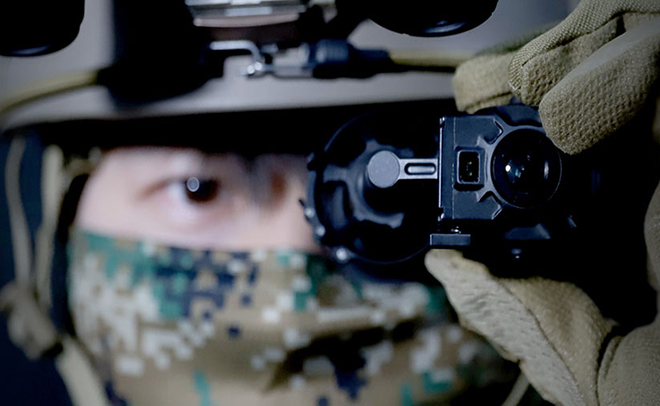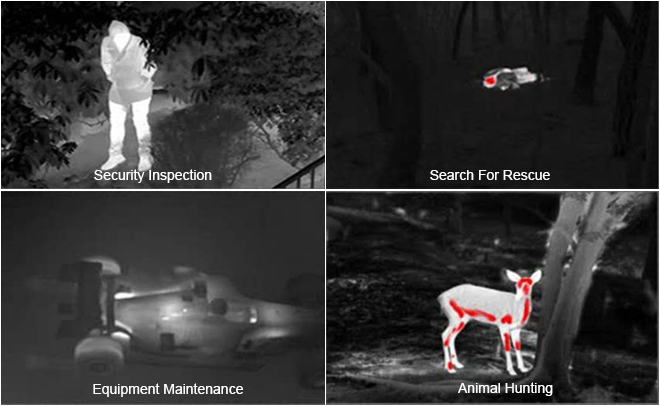
Main Feature:
Clip-on thermal imaging is one of the technologies to realize night vision. The fundamental difference between clip-on thermal imaging devices and other night vision devices is that they adopt different technologies. Night vision technologies can be broadly divided into three main categories: image intensification, active illumination, and thermal imaging. Clip-on thermal imaging devices adopts the last one.
Night vision devices adopting image intensification and active illumination technologies are restricted by ambient brightness. They cannot provide high-quality image in complete darkness or under bad weather. Clip-on thermal imaging devices can offer crisp and clear images regardless of darkness and bad weather. Any target that is hotter than the environment will be highlighted at night. What's more, clip-on thermal imaging devices can be easily attached on common day scopes. The day scopes can be switched to thermal scopes in seconds with it.

Main Application:
Clip-on thermal imager is a thermal camera that can be clipped on a day scope as an attachment. By attaching it in front of a day scope, you can turn your day scope into a thermal scope in a few seconds. Meanwhile, the accuracy and the center of the reticle will not be affected or changed, which means there is no need to zero it again so you will not miss any hunting moment. Besides, clip-on thermal imager can also be used as a handheld outdoor thermal camera by observing directly through the eyepiece.
Main Parameters
Detector Type | Uncooled Infrared |
Resolution | 256× 192/ 384× 288 |
Pixel Pitch | 12μm |
Detector Frame Rate | 50Hz |
Spectral Range | 8~ 14μm |
NETD | ≤50mK@25℃ ,F# 1.0 |
Typical power consumption@25 ℃ with analog video expansion board |
Steady-state power consumption about 430mW ; Max. peak power consumption about 1.03W |
Data Output | With analog video expansion component: PAL 25Hz |
Communication Interface | UART |
Dimension | 18mm* 19mm |
User Connector | With analog video expansion component: Molex 533980571 |
Operating Temperature Range | -20℃ ~ +60℃ |
If you need any other thermal core modules or imager, please contact us freely.










